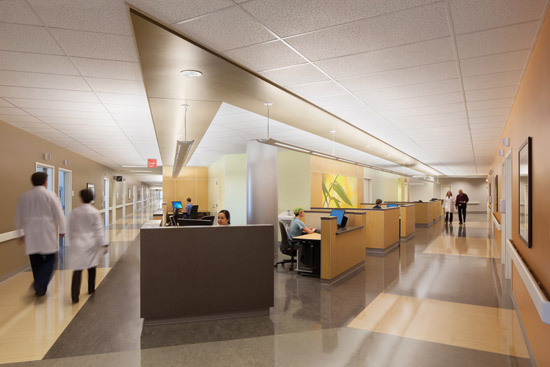New Coatings to Help Support Cleaner and Fresher Healthcare Environments
Formaldehyde may be best known for its role as an embalming liquid, but it is also used in the manufacture of building materials, furnishings, and household products. In the healthcare setting, potential sources of formaldehyde emission include carpet, wood cabinets, fabrics, laminates, fiberboard, and glue.
Despite its prevalent use in everyday items and its subsequent presence in our everyday environments, formaldehyde is an organic compound that can pose a real threat, causing both short- and long-term adverse health effects. Formaldehyde exposure can cause watery eyes, burning sensations in the eyes and throat, nausea, wheezing, coughing, fatigue, and skin rashes. Formaldehyde has also been identified as a carcinogen and, as the EPA notes, may cause cancer in humans. It is certainly not a desired presence in an environment dedicated to recovery and the restoration of health.
In the past, healthcare facilities had a few limited methods for reducing formaldehyde exposure to patients, staff, and visitors. They could require that only low-emitting building materials, furnishings, and fabrics be used throughout the building. Increased ventilation, temperature and humidity control can be used, to some extent, to reduce the amount of formaldehyde emitted by different sources into the indoor environment. Now, specifiers and designers have a new and powerful tool that helps to reduce formaldehyde from the air: formaldehyde-reducing paint.
When the formaldehyde gas comes in contact with a surface that has been painted with a formaldehyde-reducing coating, the paint breaks down the organic compound at a molecular level, literally disrupting the carbon chain and transforming the gas into water molecules and an inert gas that is harmless to people.
The result is an immediate and ongoing reduction in the presence of formaldehyde in the healthcare space and an improvement in the quality of the air throughout the facility. Less polluted air enhances the overall healing quality of the environment, and at the very least, reduces the potential for the indoor environment to cause additional irritation or infection for patients.
 |
Architectural wall coatings can improve indoor environmental quality by helping to remove formaldehyde from the air. Photo courtesy of The Sherwin-Williams Company |
Specify a formaldehyde-reducing coating in patient rooms and public areas to improve the quality of the air for patients, staff, and visitors.









